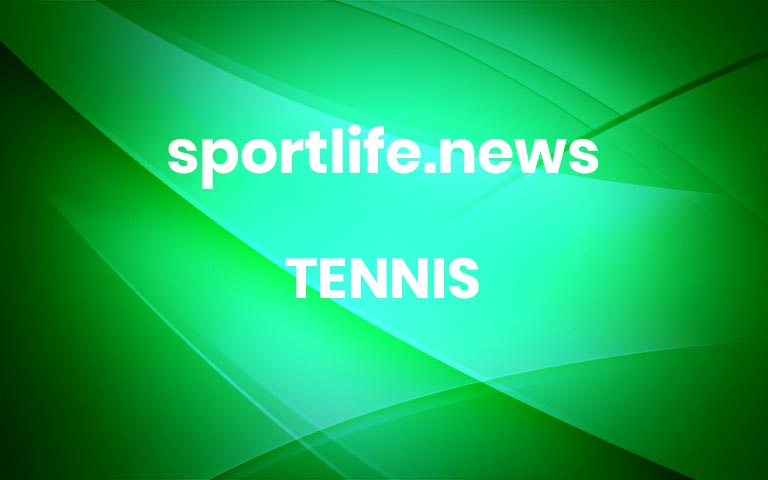Jennifer Brady Went to College, Then Germany to Get Better at Tennis
Jennifer Brady did not want to become complacent about a career that was hovering stagnant in the singles rankings, so she sought discomfort.The choice has brought Brady, 25, to new heights: on Tuesday she will play in the first Grand Slam quarterfinal of her career, against Yulia Putintseva of Kazakhstan.In an interview, Brady said she had been looking last year for something “outside of the U.S.T.A.” and “outside of the box” to pull herself out of a rut.“I wanted more,” Brady said, adding: “I just felt kind of stuck, and I wasn’t happy with where I was. I thought if I changed something, maybe something good could happen out of it.“And it definitely did,” she said.Going against the currents in tennis, Brady left the traditional tennis training turf of Florida last winter for the cold of Regensburg, Germany, working with the coach Michael Geserer and fitness trainer Daniel Pohl. She lived in a small rented apartment in Regensburg, training six days a week and resting on Sundays, quickly learning that nearly everything in Regensburg is closed on Sundays.Geserer was immediately impressed by Brady’s mind-set. “Every day she steps on court or does exercises, she gives 100 percent,” Geserer said. “That made her stronger.”Brady, who prides herself on being receptive to coaching, worked harder than ever to get herself into the best shape of her life.“The training is different, the mentality is different,” Brady said of training in Germany. “It’s a totally different vibe. I really like it. It’s really structured, really intense. Every practice that I’ve had, I’m improving and getting better at something but I think not many American players would enjoy or thrive in that atmosphere.”The unconventional choice quickly paid dividends once the season began. At the first tournament of the year in Brisbane, Australia, Brady won three matches in qualifying to reach the main draw, where she beat Maria Sharapova in the opening round in what would be the penultimate match of Sharapova’s career. In her next match, Brady defeated Ashleigh Barty, the No. 1 ranked singles player and a clear fan favorite playing in her home country.“I have a lot of confidence in my legs, in my strength,” Brady said that week. “I think that I’m stepping on the court with a different mentality, a different sort of belief in myself and, just kind of changed. I feel like a different person, a better person; fresh, mentally, physically.”When the tour resumed after a five-month stoppage prompted by the coronavirus pandemic, Brady had not missed a beat.“She had the discipline and she had the goals,” said Geserer, who was giving her instructions from Germany while she was training in Orlando, Fla. “She wanted to get stronger, and she was working a lot. That paid off, but we are still at the beginning.”She won the first WTA tournament that returned in North America, taking the title at the Top Seed Open in Lexington, Ky., out of a field that had included stars like Serena Williams, Venus Williams and Victoria Azarenka.Brady did not drop a set in her five matches in Kentucky, and she didn’t lose more than four games in any set.Through four matches at the U.S. Open, Brady, seeded 28th here, has the same streak intact, including a dominant win Sunday over the 2016 United States Open champion, the 17th-seeded Angelique Kerber, 6-1, 6-4, to reach the quarterfinals at Flushing Meadows.“She’s serving very well, and the next shot after her serve is really fast,” Kerber said. “She’s dominating with her game, especially on her forehand side. I tried everything, but in the end, in the important moments, she played better.”Born in Harrisburg, Pa., where few other girls played tennis, Brady practiced mostly with boys. Seeing the success they had with their hard, heavy forehands, she developed a game that could compete with the same weapons. Those weapons still stand out, even in the professional ranks.“If you watch Dominic Thiem and Naomi Osaka, the way the ball comes off the racket is totally different,” Brady said. “Growing up a lot of people said I played like a guy. They thought it was an insult, but I was like, ‘That’s fine, I don’t care.’”As an adolescent, Brady trained at the Evert Tennis Academy in Boca Raton, Fla., alongside players like Madison Keys. But while Keys turned professional early, Brady instead opted to play in college at U.C.L.A.“I definitely wasn’t ready to perform or compete with any of these other players,” Brady said. “For me, college was a big learning experience on and off the court, just growing as a person, becoming more mature.”Though the path from college tennis to the elite professional levels has been well-trodden in men’s tennis, including recent examples like John Isner and Kevin Anderson, it is less common in women’s tennis, where promising young prospects often turn professional as teenagers.Brady is the first woman who played collegiate tennis to reach the U.S. Open quarterfinals since Gigi Fernandez in 1994.Brady will face Putintseva, seeded 23rd, for a spot in the semifinals. Brady said she is now driven by seeing just how much better she can get.“It’s not really about winning or losing or how much money I make or things like that — I just want to go out there and compete and have fun doing it,” she said. “It’s something that I love, so every single day I’m just happy to be out here competing.” More


